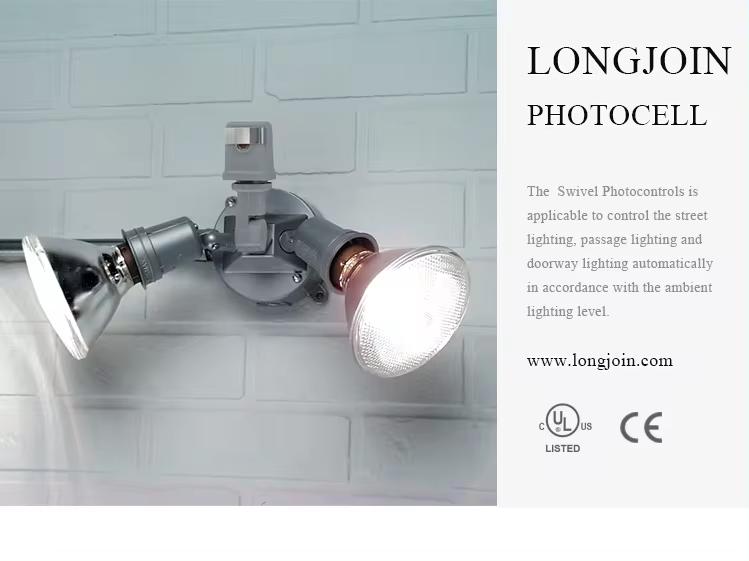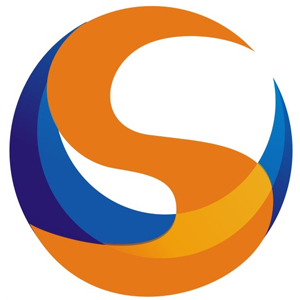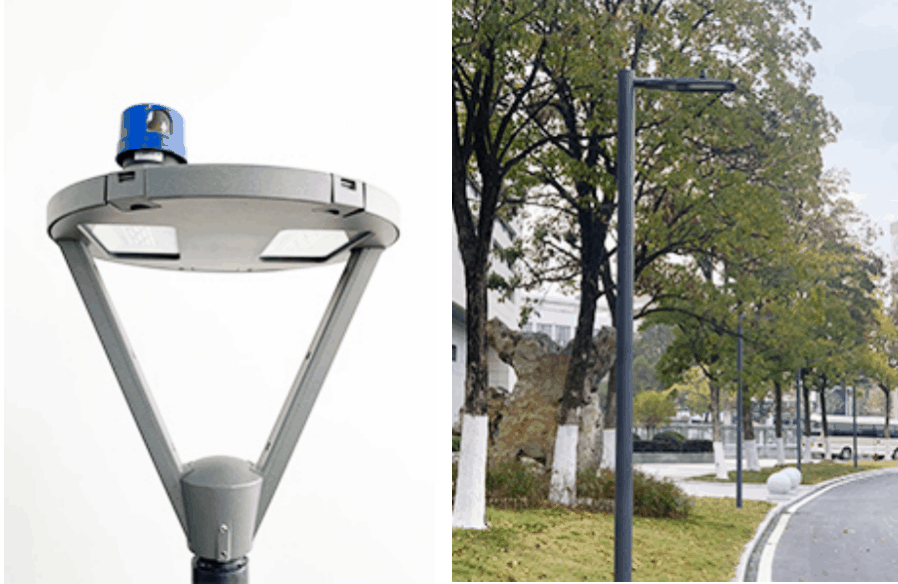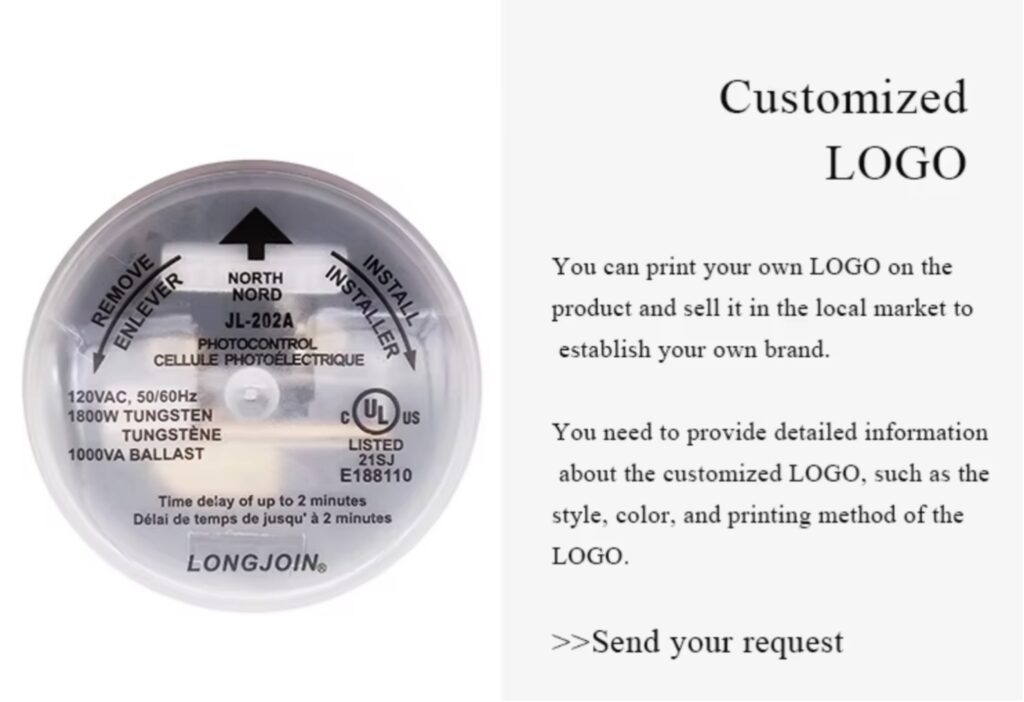Schema
- Introduzione
- In che modo Long-Join consente un controllo remoto affidabile con UART/RS-485?
- Cosa rende Zhaga Book 18 la chiave per l'intelligenza modulare dell'illuminazione stradale?
- In che modo il sistema ibrido solare-rete garantisce un'illuminazione ininterrotta?
- Quali sono i vantaggi dell'integrazione derivanti dalla combinazione di tutte e tre le tecnologie?
- Perché scegliere Long-Join Prese fotocontrollate per l'integrazione di Smart Streetlight?
- Parole finali
Perché accontentarsi di un'illuminazione di base quando le città hanno bisogno di intelligenza? Oggi i lampioni devono fare molto di più che accendersi e spegnersi. Hanno bisogno di controllo remoto, compatibilità con i sensori e alimentazione affidabile, anche quando il sole tramonta.
Ma trovare un sistema che gestisca tutto? È raro. Noi di Long-Join abbiamo creato una soluzione intelligente che combina il controllo UART, la modularità Zhaga e l'alimentazione ibrida solare-rete. È tutto ciò di cui il tuo progetto di illuminazione intelligente ha bisogno, senza la difficoltà di assemblarlo.
In che modo Long-Join consente un controllo remoto affidabile con UART/RS-485?
Panoramica di UART/RS‑485 come protocolli di livello industriale

UART/RS‑485 Offre un controllo cablato collaudato a lunga distanza. Supporta reti multi-nodo su percorsi di illuminazione stradale. I trasferimenti di dati sono resistenti ai disturbi elettrici.
RS‑485 consente la comunicazione half-duplex, consentendo più controllori di illuminazione condividere lo stesso bus. Questo lo rende ideale per applicazioni di illuminazione stradale intelligente in cui tempi di attività e coerenza sono importanti. Ecco una tabella che confronta alcuni protocolli di illuminazione stradale comuni.
| Protocollo | Tipo di comunicazione | Distanza massima | Caso d'uso comune | Gateway richiesto |
| UART | Cablato | <15m | Interfaccia del controller interno | NO |
| RS-485 | Cablato (differenziale) | >1200m | Integrazione SCADA industriale | NO |
| ZigBee | Senza fili (rete) | ~100 metri | Rete di illuminazione della città intelligente | SÌ |
| LoRa | Wireless (a lungo raggio) | >2 km | Ambienti rurali/a basso consumo energetico | SÌ |
Ruolo delle serie JL-243C e JL-244C nel controllo cablato
La serie JL‑243C/244C integra RS‑485 o UART nel controllore fotocellulaComunicano direttamente con sistemi Modbus, SCADA o PLC. Questi modelli gestiscono la logica di dimmerazione, gli aggiornamenti del firmware e la diagnostica.
Ciò elimina la necessità di gateway di protocollo separati. L'alloggiamento è classificato IP per l'uso in esterni. UL E CE Le certificazioni garantiscono la conformità alle normative in ambienti difficili.
Vantaggi principali
Facile integrazione
IL sensori di luce comunicare in modo nativo con i sistemi di controllo industriale, consentendo una facile implementazione nelle infrastrutture esistenti.
Monitoraggio in tempo reale, oscuramento e diagnostica dei guasti
Gli operatori possono monitorare in tempo reale tensione, corrente, temperatura e stato delle lampade, consentendo una manutenzione più rapida.
Costi ridotti
Il supporto integrato del protocollo elimina la necessità di hardware aggiuntivo. Non sono necessari convertitori o middleware. Ciò riduce la complessità del sistema e il costo totale del progetto.
Cosa rende Zhaga Book 18 la chiave per l'intelligenza modulare dell'illuminazione stradale?
Zhaga Libro 18 definisce un'interfaccia standard tra apparecchi di illuminazione e smart sensori fotografici o moduli di comunicazione. Ecco i vantaggi:
- I componenti certificati di diverse marche si collegano perfettamente.
- Questo design plug-and-play consente futuri aggiornamenti senza dover ricablare l'apparecchio.
- Accelera l'implementazione riducendo al contempo i costi di manutenzione e integrazione a lungo termine.
- La certificazione Zhaga-D4i garantisce che i componenti soddisfino in modo affidabile le specifiche di potenza, meccaniche e di comunicazione.
Caratteristiche delle prese Zhaga serie JL-700

Compatibilità con sensori a microonde, BLE, LoRa, ZigBee
La presa JL-700 supporta moduli sensore a bassa tensione provenienti da diversi ecosistemi. Ecco una tabella che mostra i diversi tipi di sensori compatibili con le prese Zhaga.
| Tipo di sensore | Funzionalità | Uso tipico | Requisiti di potenza |
| Sensore a microonde | Rilevamento del movimento | Si attenua all'avvicinarsi nelle strade/parchi | 12 V CC |
| Modulo BLE | Comunicazione wireless a corto raggio | Controllo basato su app o relè dati | 5 V CC |
| ZigBee Modulo | Integrazione della rete mesh | Illuminazione urbana su larga scala | 3,3–5 V CC |
| LoRa Nodo | Comunicazione a lunga distanza | Configurazioni di illuminazione remote/rurali | 3,3 V CC |
Tenuta IP66 e conformità ANSI C136.41
Struttura robusta con tenuta stagna, certificata per l'uso in ambienti esterni difficili.
Alimentazione ausiliaria 5V/12V integrata per moduli esterni
Fornisce alimentazione direttamente ai moduli plug-in, riducendo la necessità di cablaggio esterno.
In che modo Long-Join consente la personalizzazione e la flessibilità a livello OEM
Long-Join offre diverse varianti di JL-700, inclusi modelli precablati e senza cavi. Questi sono certificati secondo lo standard Zhaga Book 18 e testati da DEKRA per garantire prestazioni affidabili. Gli OEM possono scegliere tra diversi fattori di forma, versioni con cavo o versioni con solo attacco, a seconda del design dell'apparecchio di illuminazione.
Questa flessibilità accelera l'integrazione, supportando al contempo la praticità dell'hot-plug su supporti superiori, laterali o inferiori. Che si tratti di integrare nodi LoRa, dispositivi BLE o moduli di rilevamento personalizzati, Long-Join si adatta in modo efficiente alle esigenze del cliente.
In che modo il sistema ibrido solare-rete garantisce un'illuminazione ininterrotta?
Nelle aree con soleggiamento irregolare o frequenti giornate nuvolose, i lampioni solari spesso si guastano quando le batterie si esauriscono. Ecco una tabella che illustra il comportamento del sistema in diverse condizioni di luce solare.
| Condizione | Tensione della batteria | Fonte di alimentazione utilizzata | Stato dell'illuminazione |
| Pieno sole, di giorno | >13,5 V | Solo solare | Spento o attenuato |
| Nuvoloso, carica parziale | 11,5–13 V | Backup solare + rete | Funzionamento normale |
| Notte, batteria scarica | <11,0 V | Solo griglia | Piena luminosità |
| Rilevato guasto della batteria | N / A | Solo griglia | Backup di emergenza attivo |
I sistemi ibridi risolvono questo problema combinando i pannelli solari con l'accesso alla rete elettrica. Ciò garantisce un'alimentazione affidabile anche quando la produzione solare è bassa.
Come funziona l'architettura ibrida di LongJoin
La configurazione ibrida di Long-Join dà priorità all'ingresso solare e utilizza la rete di backup solo quando necessario. Un controller intelligente monitora la tensione della batteria e la carica solare. Se la batteria scende al di sotto della soglia, l'alimentazione passa automaticamente alla rete CA. Una volta che la ricarica solare ripristina uno stato di carica sufficiente, il controllo torna al funzionamento a energia solare.
Il sistema include un commutatore di trasferimento o un meccanismo di inverter ibrido per gestire la commutazione CA/CC in modo fluido. Questi componenti sincronizzano la rete e l'uscita dell'inverter per evitare interruzioni di corrente.

Risultati
- I blackout sono meno probabili. In caso di guasto dell'impianto solare, la rete elettrica interviene immediatamente. Le luci rimangono accese, anche durante diverse notti nuvolose.
- La durata della batteria migliora. Le batterie non subiscono scariche profonde. Questo le aiuta a durare molto più a lungo.
- I costi energetici diminuiscono. L'energia solare alimenta il sistema per la maggior parte del tempo. La rete elettrica interviene solo quando necessario. Nel tempo, questo può ridurre le bollette elettriche fino a 751 TP3T.
Quali sono i vantaggi dell'integrazione derivanti dalla combinazione di tutte e tre le tecnologie?
UART/RS‑485, prese Zhaga e alimentazione ibrida solare-rete presentano tutte caratteristiche distintive. Combinarle potrebbe contribuire a realizzare un sistema di illuminazione più intelligente. Queste tecnologie lavorano insieme per semplificare la progettazione e ridurre la complessità. Consentono il controllo centralizzato da un'unica piattaforma. Il sistema garantisce inoltre un funzionamento affidabile in diversi ambienti e progetti di illuminazione.
Progettazione di sistemi unificati
Incorporando la comunicazione, le interfacce modulari e la commutazione di potenza in un unico regolatore di luce, Long-Join riduce il numero di componenti. Meno cavi e dispositivi significano un'installazione più rapida e minori costi dei materiali. Questo design semplificato riduce i punti di errore e semplifica la manutenzione per tutta la durata del sistema.
Interoperabilità migliorata e controllo centralizzato
Grazie alla comunicazione RS‑485/UART integrata e all'espansione Zhaga, Long‑Join consente una vera interoperabilità. Interruttori di controllo della luce, moduli IoT e logica di alimentazione si collegano tutti a un unico nodo. Un sistema di gestione centrale può quindi interrogare ogni funzione (stato dell'illuminazione, letture dei sensori, tensione della batteria e diagnostica) da un'unica dashboard.
Questo accesso unificato elimina la frammentazione e velocizza la diagnostica e gli aggiornamenti.
Di seguito è riportata una tabella che illustra gli scenari di utilizzo dell'architettura all-in-one di Long-Join.
| Tipo di progetto | Utilizzo UART/RS-485 | Zhaga Usa | Utilizzo ibrido solare-rete |
| Autostrade intelligenti | SÌ | Sì (sensore radar) | Facoltativo per le zone di emergenza |
| Villaggi remoti | NO | Sì (nodo LoRa) | SÌ |
| Zone urbane intelligenti | SÌ | Sì (BLE/ZigBee) | NO |
| Installazioni militari | SÌ | Sì (comunicazione sicura) | SÌ |
Un singolo handle Long-Join fotocellula crepuscolare funzioni, commutazione di potenza ibrida e moduli sensore collegati tramite Zhaga Book 18. Questo elimina la necessità di più controller e gateway su ciascun polo. Con tutto sotto un unico dispositivo, gli aggiornamenti diventano più semplici e la scalabilità aumenta.
Perché scegliere Long-Join Prese fotocontrollate per l'integrazione di Smart Streetlight?

Long-Join vanta oltre due decenni di esperienza nello sviluppo di sensori fotoelettrici e prodotti per il controllo dell'illuminazione. Ecco una rapida panoramica:
- È stata fondata nel 1996.
- Oggi opera in uno stabilimento produttivo di 38.000 m²
- L'azienda consegna ogni anno più di 8 milioni di controller.
Questa portata e questa tradizione riflettono una profonda competenza nella progettazione affidabile e conveniente per ambienti esterni difficili.
Partnership strategiche con Philips, Tork e Cree
Grazie alla sua consolidata collaborazione con OEM, Long-Join ha servito importanti marchi di illuminazione, tra cui Signify (Philips), Cree, GE ed Eaton. Queste collaborazioni dimostrano la sua capacità di soddisfare le rigorose specifiche dei marchi di illuminazione e di integrarsi con sistemi riconosciuti a livello globale.
Leader del mercato nordamericano con profonda competenza negli standard
I prodotti Long-Join soddisfano ANSI C136.10, ANSI C136.41 e NEMA standard e comando oltre 50 % del mercato statunitense per fotocontrolli bimetallici. UL, CE, cUL, Direttiva RoHSe le certificazioni Zhaga confermano ulteriormente la sua conformità alle normative internazionali.
Funzionalità che distinguono Long-Join
Ricerca e sviluppo interna per la personalizzazione del protocollo
Un team dedicato di ricerca e sviluppo ha ottenuto numerosi brevetti nazionali e sviluppato soluzioni personalizzate, tra cui l'integrazione UART/RS‑485 e la compatibilità con Zhaga.
Supporto OEM/ODM chiavi in mano
Grazie ai servizi OEM/ODM a ciclo completo, Long-Join offre progettazione, confezionamento e supporto tecnico personalizzati. I clienti possono richiedere configurazioni personalizzate delle fotocellule o varianti di socket in base alle esigenze del progetto.
Parole finali
L'illuminazione stradale intelligente richiede un controllo impeccabile, una progettazione flessibile e un'alimentazione affidabile. L'approccio integrato di Long-Join soddisfa tutte e tre le esigenze in un unico sistema intelligente. Per prestazioni affidabili, Chi-Swear offre fotocellule intelligenti Long-Join supportate da un supporto esperto e da un'affidabilità comprovata.
Link esterni
- https://en.wikipedia.org/wiki/RS-485
- https://www.ul.com/services/certification
- https://europa.eu/youreurope/business/product-requirements/labels-markings/ce-marking/index_en.htm
- https://www.zhagastandard.org/books/overview/smart-interface-between-outdoor-luminaires-and-sensing-communication-modules-18.html
- https://en.wikipedia.org/wiki/Zigbee
- https://en.wikipedia.org/wiki/LoRa
- https://www.ansi.org/
- https://en.wikipedia.org/wiki/RoHS






